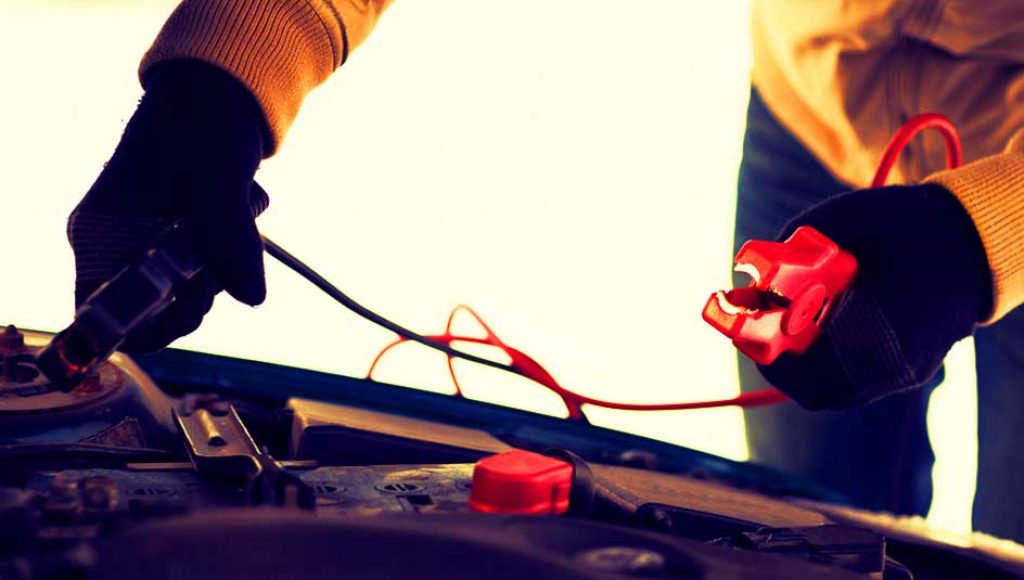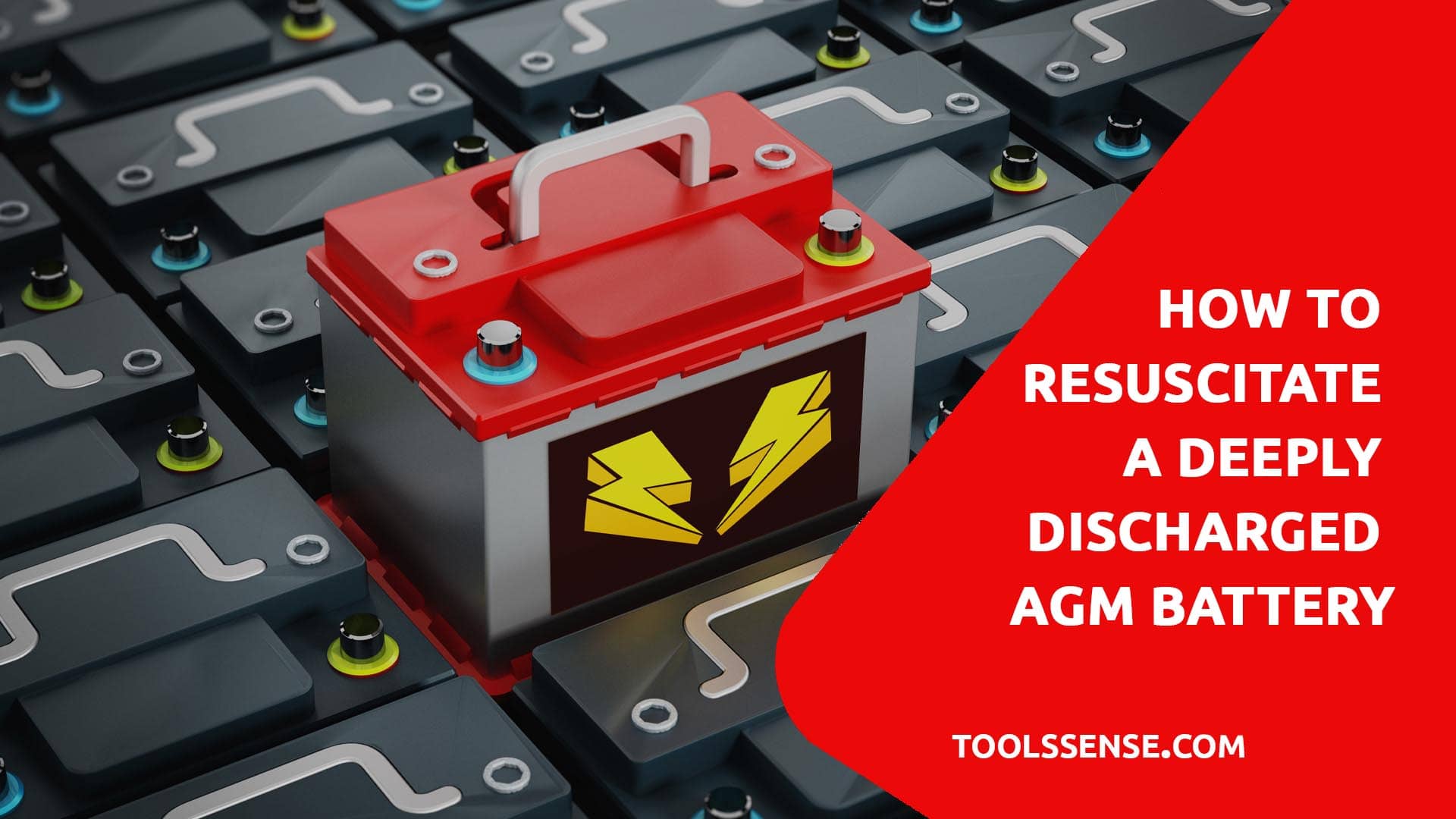Now, there is a systematic approach to rejuvenate AGM battery that is deeply discharged. A proper look at the case of your AGM battery being deeply discharged will reveal to you that it is mostly the case of your traditional charger erroneously thinking that your AGM battery is dead or damaged.
So, to super start your AGM battery and get it to the AGM battery full charge voltage, the memory of the charger has to be reset.

No matter the AGM battery type, you can rejuvenate it with some essential tools, ranging from;
- A pair of jumper cables
- A timer from your cell phone or alarm clock
- A multimeter or voltmeter
- An AGM battery that has a voltage of about 12v
The process of getting deeply discharged AGM battery to full charge voltage is not rocket science. When you have the tools mentioned above, you have to start by connecting the deeply discharged AGM battery to the decent or standard AGM battery in a parallel line with the jumper cables.
This is easily achieved by clamping the bad AGM battery’s positive terminal to the decently charged AGM battery’s positive terminal, and doing the same with the negative terminals of both batteries.
If you’ve ever jumpstarted a car or any other vehicle with a good battery, then it will be easier for you to understand how to resuscitate a deeply discharged AGM battery, because we are talking about a similar thing here, though not exactly the same.
Done with this initial process in trying to super start AGM battery, you now have to bring in your traditional battery charger. Try and connect the traditional charger to the charged AGM battery, and it will make the charger to start sending current to both batteries.
The reason behind this is that when the charger measures the voltage of the good battery, it bypasses the protection circuitry that makes it not to charge the deeply discharged battery, thereby sending charge to the battery.

The process of getting deeply discharged AGM battery to full charge voltage is not rocket science. When you have the tools mentioned above, you have to start by connecting the deeply discharged AGM battery to the decent or standard AGM battery in a parallel line with the jumper cables.
This is easily achieved by clamping the bad AGM battery’s positive terminal to the decently charged AGM battery’s positive terminal, and doing the same with the negative terminals of both batteries.
If you’ve ever jumpstarted a car or any other vehicle with a good battery, then it will be easier for you to understand how to resuscitate a deeply discharged AGM battery, because we are talking about a similar thing here, though not exactly the same.
Done with this initial process in trying to super start AGM battery, you now have to bring in your traditional battery charger.
Try and connect the traditional charger to the charged AGM battery, and it will make the charger to start sending current to both batteries.
The reason behind this is that when the charger measures the voltage of the good battery, it bypasses the protection circuitry that makes it not to charge the deeply discharged battery, thereby sending charge to the battery.
When you are done with this step, and the AGM battery charger is now sending charges to both batteries, the next step would be to allow the process to last for some time. 30 minutes would be enough, after which you check for two different things.
The first thing to check for in the two AGM batteries is whether the AGM battery that is fully discharged is hot to your hands. Now, when we say hot here, we mean hot, and not warm, because whenever a 24V AGM battery is charging, it will mostly likely get to a point when it becomes warm.
So, if the battery is warm, that is a normal occurrence. However, if it turns hot, then it might have a bigger problem than just being heavily discharged.
If you notice this, then you have to disconnect the battery and halt the charging. If you only notice some warmth, then you have to move to the next check.
The next check to carry out after 30 minutes of the initial charging of the charged and deeply discharged AGM battery is whether the charging process is generating excessive gas. When a deeply discharged AGM battery is being rejuvenated, a small amount of gas that is normally not noticeable is always generated.
This is part of the charging process, and it’s okay. However, when there is a loud hissing sound coming out from the deeply discharged battery, this could be an indication that the battery is suffering severe damages.
At this point, you have to halt the charging process, as you cannot rejuvenate AGM battery that gives out such sound.
However, after the check and none of the mentioned anomalies are noticed in the process of trying to rejuvenate AGM battery, then you have to turn off the charger.
When you do, go ahead and disconnect the connection between the two batteries, and check the deeply discharged battery’s voltage.
You are not expecting to see an AGM battery full charge voltage for now, but if you see something up to 10.5V on the hitherto bad battery, then it’s time for you to connect the charger to the battery directly for direct charging until it attains AGM battery full charge voltage.
That is how to resuscitate a deeply discharged AGM battery.
However, if you look at the voltage of the deeply discharged battery after 30 minutes and it is not up to 10.5V, you have to connect it back to the charged battery with the parallel method using the jumper cables, and give it another 30 minutes to see if the deeply discharged battery will come up.
You have to keep doing this until you get the required voltage to start charging directly. If not, then the battery is completely damaged and cannot be resuscitated. At this point, you might need to seek help from an expert.
Meanwhile, in all these, you have to ensure that you are using a developed technology charger that has unique or custom settings for the charging of deeply drained AGM batteries, otherwise, you won’t learn how to resuscitate a deeply discharged AGM battery because it won’t work.
When you are trying to rejuvenate AGM battery, there would be no need for water. It is only when you send this to an expert that adding water to AGM battery may be deemed fit. At this point, it becomes a professional job.

